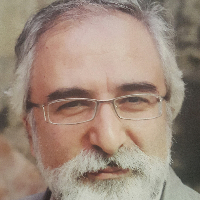The Effects of Vaghf (Endowment) on Sustainability of Safavid Madrasas (Schools)
Author(s):
Abstract:
Nowadays, a socio-economic program or process which conserves natural resources, yet can response the needs of present generations of the society and posterity, is considered as a Sustainable System. A type of this kind of planning for development could be observed in traditional Islamic societies which is a one thousand years old one, and is called Vaghf ()endowment)(. In Islamic cities, we usually encounter some complex structures that because of the accomplishment of the tradition of Vaghf are more persistent than the other structures and have survived with their same original function, because in their deed of endowment, the benefactors mentioned to the function of the building as an unalterable provision. Furthermore, most of the revenues of endowed properties were spent for restoration and conservation of the buildings. Also some of these revenues were spent for subsidizing the students, teachers and other employees in the schools which it caused students to educate without worry. So these types of complexes protected their endowed properties and brought forth their sustainability. By the time of legitimization of “Shiism” religion¬ in “Safavid era”, the clergy paid attention to religious schools to develop and promote the religion. So, many schools were built in this era. Another evolution occurred in this period; the tradition of “endowment” was prevailed, that it led to a relative independence of schools. Because the revenues of consecrated places were spent for expenditures of schools, so before the formation of a governmental organization for education, people constructed Maktab and Madrasa ()primary schools and high schools)(and devoted them to Muslims, so this way helped popularity and persistence of the structures over the time. On the other hand, in the deeds of endowments, different functions of Madrasas were mentioned during the provisions and it was emphasized that the schools should be multipurpose. In fact these spaces were used for public utilizations such as performance of daily prayers by locals. This public usage alongside with the main educational functions caused that attention be paid to the important role of these schools as multipurpose structures in urban construction. This caused to link schools with the community. By investigation and analyzing of these educational spaces, it is inferred that structures of these schools were flexible and responsible to the different needs. So, we can define the effects of endowment over the Madrasas in two parts; the first part does not have any anatomic aspect, like subsidizing the grant to the students of the schools, and the second part is directly concerned with structural and architectural specifications of schools and their physical visual appearance. Therefore, in this essay, by investigation into deeds of endowments and itineraries of Safavid period, and analyzing the space of the Madrasas of this period, the authors have tried to explain the effects of endowment on curriculum and architecture of Safavid schools, and finally they will make clear the impact of its effects on sustainability of the schools of the mentioned era.
Keywords:
Language:
Persian
Published:
Journal of Architecture and Urban Planning, Volume:3 Issue: 6, 2011
Page:
89
magiran.com/p1161673
دانلود و مطالعه متن این مقاله با یکی از روشهای زیر امکان پذیر است:
اشتراک شخصی
با عضویت و پرداخت آنلاین حق اشتراک یکساله به مبلغ 1,390,000ريال میتوانید 70 عنوان مطلب دانلود کنید!
اشتراک سازمانی
به کتابخانه دانشگاه یا محل کار خود پیشنهاد کنید تا اشتراک سازمانی این پایگاه را برای دسترسی نامحدود همه کاربران به متن مطالب تهیه نمایند!
توجه!
- حق عضویت دریافتی صرف حمایت از نشریات عضو و نگهداری، تکمیل و توسعه مگیران میشود.
- پرداخت حق اشتراک و دانلود مقالات اجازه بازنشر آن در سایر رسانههای چاپی و دیجیتال را به کاربر نمیدهد.
In order to view content subscription is required
Personal subscription
Subscribe magiran.com for 70 € euros via PayPal and download 70 articles during a year.
Organization subscription
Please contact us to subscribe your university or library for unlimited access!



